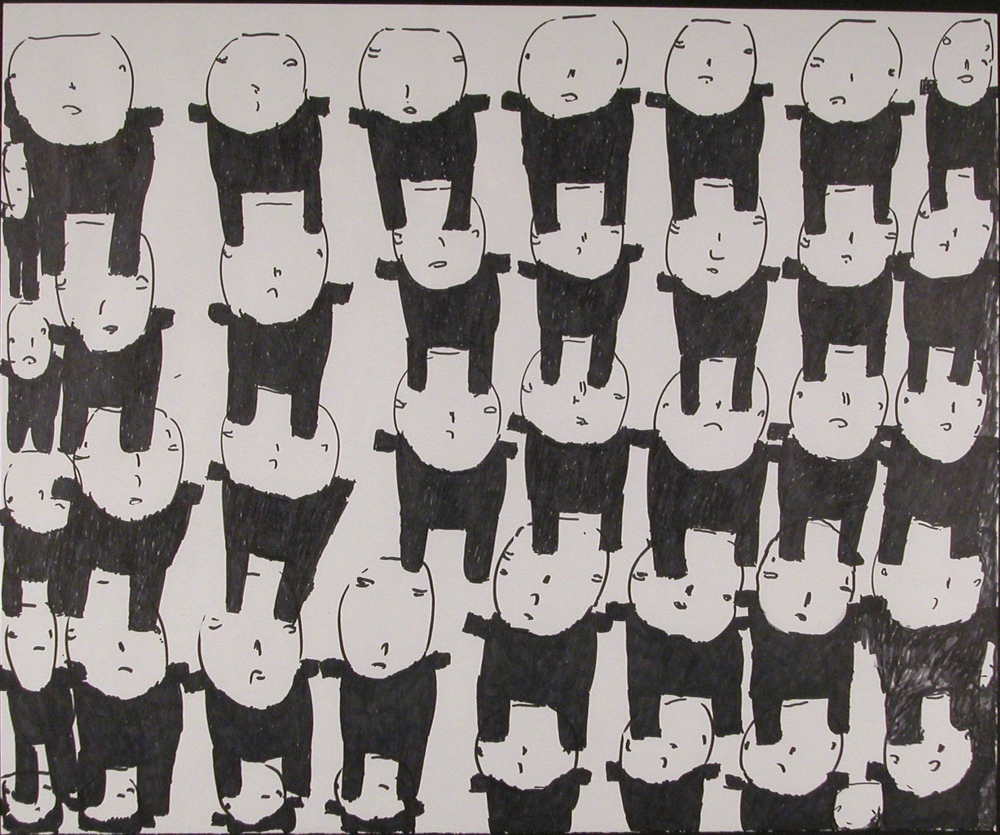
Creative Growth Art Center
Selections from the Collection
The late 1960s and ’70s marked a time of enormous social and political change in America. Cultural shifts—linked to hippie culture, women’s rights, Black power and other such movements—empowered the advancement of people with disabilities. Often marginalized and placed in state-run institutions for their entire lives, people with developmental disabilities seized upon these changes and started an active disability justice movement that remains essential and vibrant today. This new social order allowed for the idea of disability as a culture to take form and set the stage for people with disabilities to have access to expressive activities outside an institutional setting for the very first time.
Creative Growth Art Center, founded in 1974, benefited from this social climate as its concept was a radical departure from the norms of the time. It was founded as an artist-led space with a hands-off approach to fostering the inherent creative potential of every individual. It includes an adjoining gallery where the artists’ work is professionally presented, viewed and sold. Creative Growth provides opportunities for the artists and the general public to engage in meaningful encounters about the art and the artists’ lives as people with disabilities.
For nearly 50 years, this model has led to the creation of dozens of similar centers worldwide and is now an international movement demonstrating that the culture of disability, and the art of people with developmental disabilities, is advancing in countries around the world.
This movement has led to opportunities for artists like Tarik Echols to emerge from and to develop a presence in the contemporary art world.
As work by artists from such centers gain greater exposure and a larger audience, questions are raised about its relationship to the academic art world and the field of so-called outsider art. While the use of the term outsider art is not embraced by Creative Growth, there can be advantages for artists with disabilities to align themselves with collectors and galleries that support work with this label. The aesthetic similarities are often spot on, and the use of the word calls attention to an artist’s work by collectors who follow the field. That said, the term has negative connotations as it relates to how the maker, in this case a person with a disability, can be seen as being “other” and not a part of the contemporary social fabric. It also delegates the work to a niche market, where it might only be seen by a segment of art collectors and curators.
While the field continues to grow as a recognized force within the contemporary art world, additional efforts toward advancement and growth will continue to be required as we move forward. The number of people with disabilities who have access to creative expression is still exceedingly small. It is imperative to understand that creativity is a fundamental human right and a powerful tool for people with disabilities to find aesthetic, personal and communicative growth in the world today.
The advancement of this work needs to continue, and the results of those efforts will be powerful and rewarding for both artist and viewer alike.
Tom di Maria
Director Emeritus, Creative Growth Art Center
Creative Growth Art Center
Creative Growth is a nonprofit art studio in Oakland, Calif., that advances the inclusion of artists with developmental disabilities in contemporary art and strengthens community by providing a supportive studio environment and gallery representation.
Get a closer look
Photos
View photos from Creative Growth Art Center: Selections from the Collection on Flickr.

Read about Creative Growth
Learn about the art studio in the article Creative Growth Art Center by Tom di Maria in the museum’s annual publication, The Outsider.

